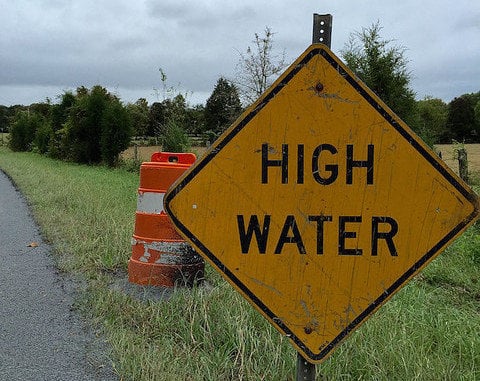

Since 2012, FEMA’s building requirements for the national flood insurance program have become much more restrictive, and insurance costs have increased dramatically. For commercial properties located in a high-risk flood area (such as waterfront property) that hold a mortgage from a federally regulated or insured lender, the owner is required to purchase a flood insurance policy. However, the specific costs vary depending on how much insurance is purchased, what it covers, and the property's flood risk.
What costs should property owners or developers take into account when considering waterfront property – and are there ways to offset these added expenses?
At least 25 percent of businesses that close after events, like a flood, never reopen.
From 2008 to 2012, the average commercial flood claim was more than $87,000. Flood insurance is the best way to protect your business from devastating financial loss.
Is your waterfront property located in a high risk flood zone, or not? And how much will flood insurance cost your business exactly?
The only way to obtain a precise insurance quote is to contact a flood insurance agent, however premiums are generally calculated based on:
Policies can be purchased for contents only, building only, or both contents and building coverage.
To identify your area’s flood risk, FEMA has developed a comprehensive database of Flood Insurance Risk Maps that are based on Flood Insurance Studies. The studies include statistical data for:
Floodplains and areas subject to coastal storm surge are shown as high-risk areas or Special Flood Hazard Areas (SFHAs). Some parts of floodplains may experience frequent flooding while others are only affected by severe storms.
The Homeowner Flood Insurance Affordability Act of 2014, which passed in March, amends the Biggert-Waters Flood Insurance Reform Act of 2012 that was created to gradually restore the national flood insurance program to solvency and encourage homeowners and communities to undertake flood mitigation efforts in high hazard areas. But it resulted in skyrocketing premiums of up to 25% each year for some property owners. Under the new bill, the premium for primary, owner-occupied residences will go up by a more modest 5 to 18 percent per year until reaching the full-risk rate.
While higher flood insurance premiums are certainly a factor during the site selection process, especially when considering waterfront property, it’s also worth taking into consideration ways to help offset those additional costs.
Currituck County, N.C. boasts one of the lowest tax burdens for personal, business and real property in North Carolina (and far lower than those in neighboring cities of Virginia). What’s more, recent state legislation has reduced North Carolina’s corporate tax rate to 5 percent in 2015, along with establishing a lower flat tax for personal income. In addition, Currituck County offers new and expanding businesses vast incentives and resources for development, from machinery and sales tax relief, to custom workforce training programs and reimbursements, to grants that offset investments.
Some businesses must be located on the waterfront and owners should therefore plan for risks. The Federal Emergency Management Agency (FEMA) has many free resources to guide business owners who wish to protect their businesses from floods and other coastal natural disasters. Information is readily available about engineering, materials and tools required for up-to-date building codes and floodproofing requirements at the FEMA Building Science Branch. You can also examine how FEMA’s National Flood Insurance Program can protect your waterfront business from costly repairs. In the aftermath of a declared disaster, the U.S. Small Business Administration (SBA) offers low interest Disaster Loans that can be used to repair or replace damaged or destroyed real estate, personal property, machinery and equipment, and inventory and business assets. More information about Disaster Loans, including fact sheets, use of proceeds, how to prepare an application, and additional disaster assistance resources can be found on the SBA website.
To find out more about the Currituck County business incentives that may be relevant for your company, or to ask questions about the region’s flood maps and available waterfront property, reach out to us to begin a conversation.
These Stories on Incentives
No Comments Yet
Let us know what you think